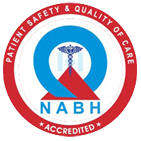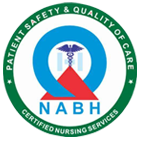A tooth abscess is an infection at the root of a tooth or between the gum and a tooth. The most common cause is severe tooth decay. Other causes of tooth abscess are trauma to the tooth, such as when it is broken or chipped, and gum disease.
These problems can cause openings in the tooth enamel, which then allows bacteria to infect the center of the tooth (the pulp). The infection may also spread from the root of the tooth to the bones supporting the tooth.
What are the symptoms of an abscessed tooth?
Toothaches that are severe and continuous and results in gnawing or throbbing pain or sharp or shooting pain are common symptoms of an abscessed tooth. Other symptoms may include:
· Fever
· Pain when chewing
· Sensitivity of the teeth to hot or cold (mostly hot-sometime relief with cold)
· Bitter taste in the mouth
· Foul smell to the breath
· Swollen neck glands
· General discomfort, uneasiness, or ill feeling
· Redness and swelling of the gums
· Swollen area in the upper or lower jaw
· An open, draining sore on the side of the gum
· Loosening of tooth
If the root of the tooth dies as a result of infection, the toothache may stop. However, this doesn’t mean the infection has healed; the infection remains active and continues to spread and destroy tissue. Therefore, if you experience any of the above listed symptoms, it is important to see a dentist even if the pain subsides.
How is an abscessed tooth diagnosed?
Your dentist will probe your teeth with a dental instrument. If you have an abscessed tooth, you will feel pain when the tooth is tapped by your dentist’s probe. Your dentist will also ask you if your pain increases when you bite down or when you close your mouth tightly. In addition, your dentist may suspect an abscessed tooth because your gums may be swollen and red.
Your dentist may also take X-rays to look for erosion of the bone around the abscess.
How is an abscessed tooth treated?
Strategies to eliminate the infection, preserve the tooth, and prevent complications are the goals of treatment.
To eliminate infection, the abscess may need to be drained. Drainage may be done through the tooth by a procedure known as a root canal. The tooth may also be extracted, allowing drainage through the socket. Finally, a third way to drain the abscess would be by incision into the swollen gum tissue. Antibiotics are prescribed to help fight the infection.
To preserve the tooth, root canal surgery may be recommended to remove any diseased root tissue and a crown may be placed over the tooth. Sometimes, the affected tooth may need to be removed.
To relieve the pain and discomfort associated with an abscessed tooth, warm salt water rinses and over-the-counter pain-reducing medication like ibuprofen (Advil or Motrin) can be used.
Can an abscessed tooth be prevented?
Following good oral hygiene practices and routine dental exams can reduce the risk of developing a tooth abscess. Also, if your teeth experience trauma (for example, become loosened or chipped), seek prompt dental attention.




